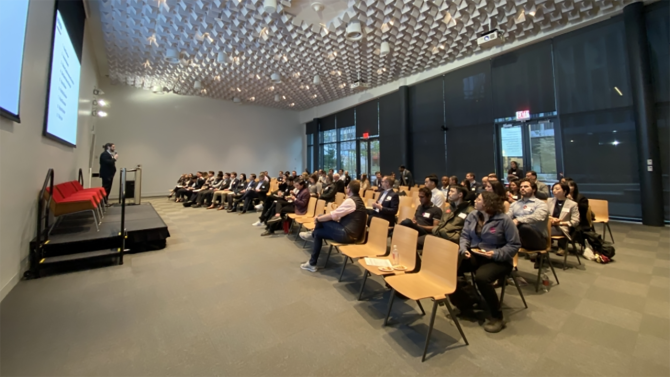An esteemed panel, comprised of Government, regulatory and corporate leaders from across the Asia Pacific, agreed on the need for a strong carbon trading system in a discussion hosted by the Climate Change Authority at the Australian Pavilion, COP26 in Glasgow.
With rules for the implementation of Article 6 of the Paris Agreement (relating to international carbon trading) currently being drafted at the Summit, the panel welcomed the establishment of an Indo Pacific Carbon Offset Scheme as a concrete way to help the globe, as well as individual nations, achieve net zero emissions.
Hosted by the Climate Change Authority Chair Grant King, panellists included senior representatives from the Governments of Papua New Guinea, Japan, the Republic of Korea and Australia together with the Chair of Australia’s Clean Energy Regulator and the CEO of Woodside Energy.
Australia’s recently announced agreements with Fiji and Papua New Guinea were welcomed by all participants.
Carbon offset trading schemes, provided they have strong integrity and transparency measures to ensure they are accounting for real abatement, were seen by all as having an important role to play in emissions reduction efforts. Such systems can produce benefits to both the country hosting abatement projects and the country or company funding them.
Speaking at the Australian Pavilion in Glasgow, The Hon Wera Mori MP, Minister for Environment, Conservation & Climate Change in Papua New Guinea, began the discussion by highlighting that the world has reached a state of emergency on climate change and the need for countries within the region to work together.
Shinichi Kihara, Deputy Director-General for Environmental Affairs, Ministry of Economy, Trade and Industry of Japan (METI) highlighted Japan’s strong commitments to achieving net zero. As a technology leader, he outlined Japan’s support for both domestic and international emissions reductions and the policies and funding instruments, including a 2 trillion yen (A$24 billion) Green Innovation Fund, they are implementing across the region and world.
Ms Minyoung Han, Deputy Director General, Ministry of Foreign Affairs and Trade, Republic of Korea outlined the emissions reductions ambitions of Korea as well as the status of several bilateral agreements being implemented, including with Vietnam and Peru, to trade in carbon offsets. Korea has had an emissions trading scheme since 2015 and its ambition is ultimately for regional and global carbon trading to be integrated with its domestic scheme. Ms Han stated that eventually nations will need to connect their carbon markets and that is why Article 6 is important.
James Larsen, Australia’s Climate Coordinator and Deputy Secretary at the Department of the Prime Minister and Cabinet, outlined Australia’s engagement with partners for high integrity elements and for emissions reductions that are real, permanent, conservatively measured and that provide real, positive impacts for communities.
The view that offset schemes need to be built on robust approaches to measurement, reporting and verification was strongly shared. All participants rejected the notion that carbon offsets trading was designed to replace domestic emissions reductions. The panel agreed emissions reduction at source is the “main game”, and because there are some emissions and processes that won’t be able to ever operate at absolute zero emissions, the goal of rapid global decarbonisation can be supported by the purchase of offsets.
Ensuring high levels of probity can be achieved through a range of bilateral, regional or global agreements – for example, from within the Indo Pacific carbon bubble framework as well the rules for Article 6. The panel was optimistic that the momentum towards net zero globally will result in a carbon trading architecture that provides the transparency, trust and integrity needed to ensure both efficient market function and social licence to operate.
David Parker AM, Chair of Australia’s Clean Energy Regulator, spoke of his organisation’s purpose as accelerating carbon abatement in Australia to net zero by 2050 with integrity. He noted that international cooperation can benefit all the parties, be a mechanism for transferring funds for the purposes of development, and reduce the costs of the transition.
Highlighting the panel’s commitment to real emissions reductions, David Parker stated that a tonne of emissions genuinely reduced is a tonne regardless of how and where those emissions are reduced. Ultimately if the goal is emissions reduction then we should be seeking the most immediate, effective and efficient reductions possible.
Mr Parker spoke of the growth of 20 per cent per annum in Australia’s carbon trading market, and a trend emerging whereby buyers are discerning between offsets with different characteristics – an example being higher prices going to emissions reduction units such as savanna burning, which has benefits to local Aboriginal people as well as environmental benefits. This trend signals a market growing in maturity and sophistication.
Woodside Energy CEO Meg O’Neill indicated that high quality credits that can be correctly accounted for internationally is a real business opportunity that companies are interested in. She noted that Woodside customers are currently seeking to purchase LNG with carbon credits included to cover the emissions produced when used. However, these are not yet able to be accounted for in the domestic emissions trading or accounting systems of their customers.
The panel identified a need for more in-depth exploration of issues relating to the fungibility, harmonisation and connection of carbon trading schemes. Article 6, which is about voluntary collaboration, can provides a vehicle for carbon clubs to emerge, bringing together countries with likeminded institutions. An Indo Pacific carbon bubble is one such grouping which could form rules that promote the emergence of a deep and liquid, high-integrity global carbon offset market.








